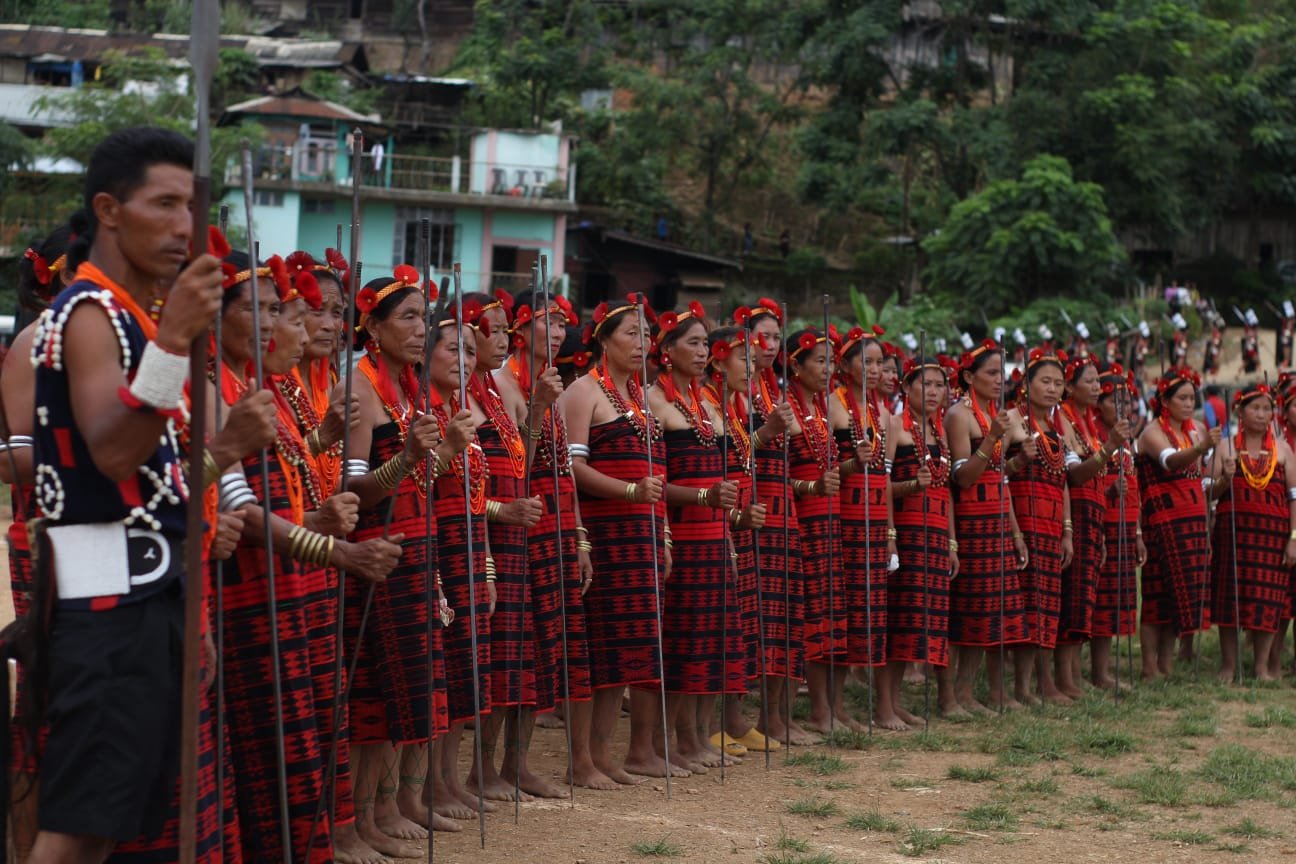Traditionally, Hünapungbi Festival of the Sangtam Nagas is celebrated during the second week of August every year. However, the government has set the 18th of August as the official date. A much awaited festival by the children as well as the elders, Hünapungbi is a festival specially for children to seek blessings from the fathers. It is a festival that pays the highest respect to the Father/Parent.
As the festival time draws near, the indigenous priest goes to every khel/pongyung and makes announcements for the festival four day’s ahead, where they will announce that the festival will be held after four days “Zangnyu”. Hünapungbi is commemorated for three days.
Day One
On the first day, before the sunrise every family catches one rooster each, which they have been rearing for the occasion. One of the legs of the Rooster would be tied to a rope and the other end to a stick to prevent the Rooster from escaping. Just as the sun begin to rise, all the children, especially the boys will gather on the village playground with their own rooster and the most awaited cockfighting competition would be held the entire day. For those with many siblings, the male siblings often hold the rooster in turns every year. And in some cases, even the female children would hold the rooster in the absence of a male sibling though it is mostly confined to male children. The children would return home with their own Rooster after witnessing/playing the game throughout the day. The winners in the cockfighting even are considered to be fortunate and the victory considered a blessings or a good omen.

Download Nagaland Tribune app on Google Play

Day Two.
The second day is a day of feast and a time to seek blessings and give respect to the Father in the family. The Rooster which participated in the previous day’s competition will be killed in every household.
A delicious meal would be prepared for the entire family. The parents would collect the liver, a piece of thigh and another portion of flesh which is called Akhungarü tphüni, and along with rice in a Banana leaf which is known as khole.
The children would then gather together and enjoy the morning meal together. As a sign of the highest respect, the head portion of the cooked chicken along with the neck, and some part of the liver is always served to the Father. Then, in return they would bless the child/children and the family in the name of Hünapungbi Festival.
It was often believed that the year’s harvest / abundance of wealth during the current year will depend on the child’s fortune/ luck or blessings in the future.
Day Three
On the final day, all the villagers would take a day off again from the field, hunting or any other work. They would actually gather together and spend time in recreation and other merry making.
Compiled and documented by
Ariba Anar
YOUTH Ambassador, Tribal Design Forum (India)
TATA Steel Samvaad fellow 2020.
Researcher, photographer at Sangtam Naga Documentation committee.

